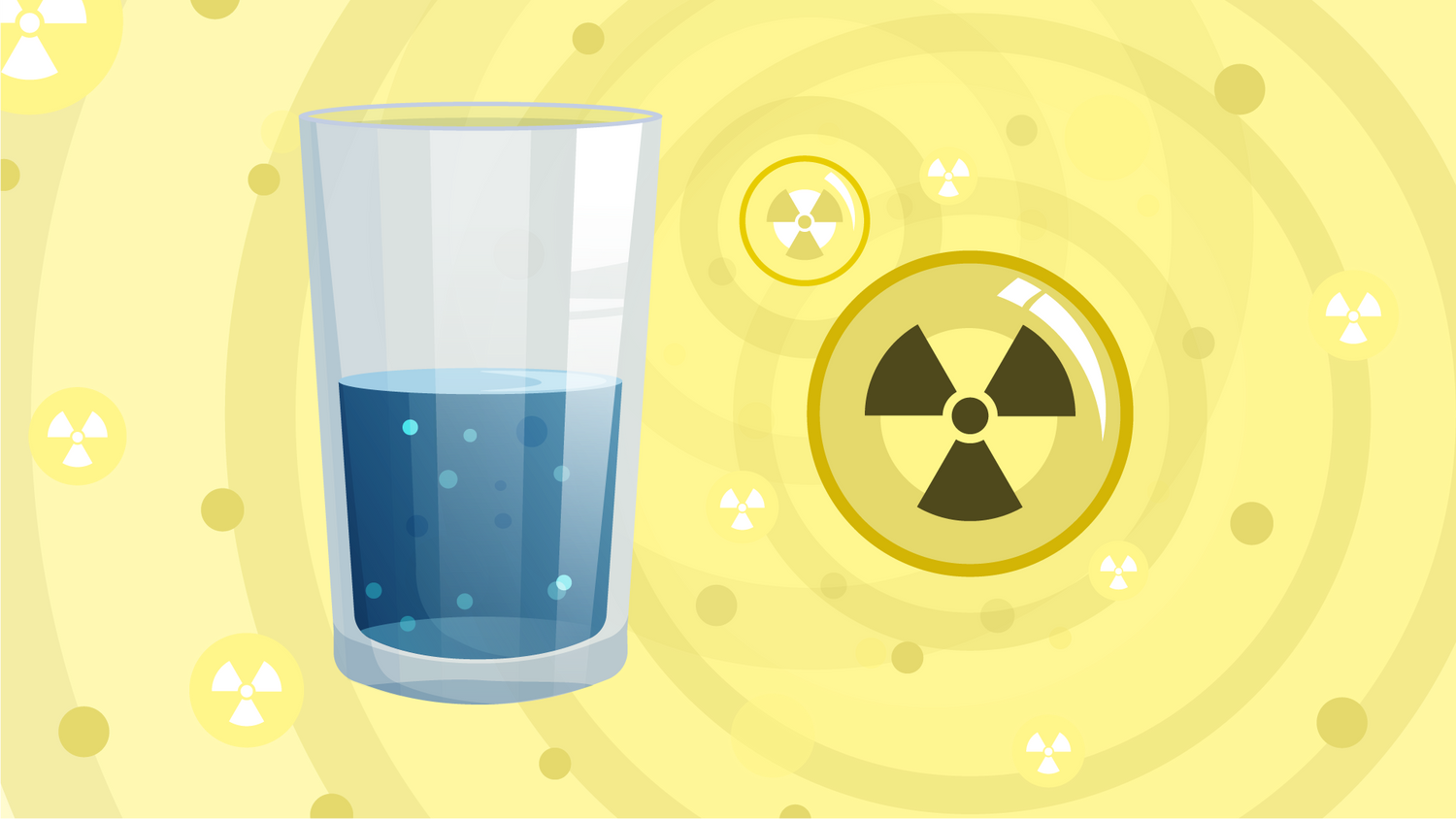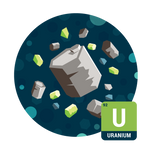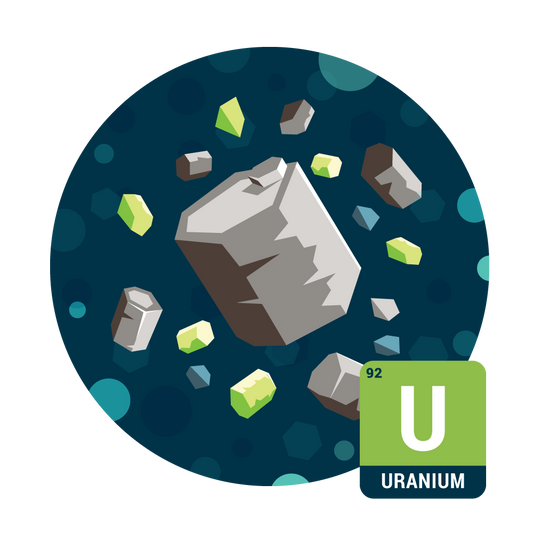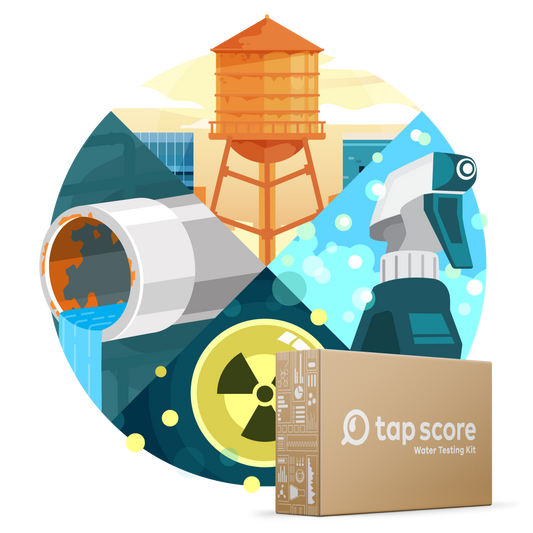
Why Is Uranium In Drinking Water?
Our blog is written by real experts— not AI. Each guide is carefully reviewed and updated based on the latest research. Plus, with no affiliate links, you can count on unbiased insights you can trust.
If you knew that your drinking water was contaminated with uranium, what concerns would you have?
If you thought of “radioactivity,” you are certainly not wrong. There are radioactive isotopes of uranium (namely uranium-238) that emit radioactive particles. However–despite popular belief–the dangers of uranium contamination in water mostly come from the toxic chemical effects of the heavy metal accumulation.[1]
We have created a quick guide to explain the concerns of uranium contaminated water: where it comes from, what to look for, and what you can do about it.
What Is Uranium?
Uranium is a naturally occurring element. It is the heaviest element present in the natural environment and can be found in rocks, soil, water, air, plants, and animals.[2] Because uranium is ubiquitous in the environment–albeit in varying concentrations–some exposure to the heavy metal is inevitable.
Common Sources of Uranium Contamination
Along with naturally occurring uranium in the environment, common sources of uranium contamination include:[3]
-
Abandoned uranium mines
-
The dissolution of uranium bearing minerals into groundwater
-
Mill tailings
-
Emissions from the nuclear industry
-
Combustion of coal or other fuels
Human Health Impacts of Uranium Contamination
Uranium exposure can result in both radiological and chemical toxicity, but as mentioned above, heavy metal toxicity from uranium is of greater concern when we’re talking about tap water.
While most ingested uranium is excreted by the body (via urine and feces), small amounts can be absorbed and carried through the bloodstream to internal organs. Scientists call this bioaccumulation. Read more about bioaccumulation here.
Uranium toxicity can affect various organs and bones, however no organ is more sensitive to uranium than the kidneys.[4] When uranium in the bloodstream is filtered by the kidneys, the compounds can cause (sometimes severe) damage to the organs’ cells. At low concentrations (below 25 parts per billion (PPB)), kidneys are able to repair themselves over the course of several weeks. This is generally the only symptom.
At high enough intakes (50 to 150 PPB, depending on the individual), uranium toxicity may cause acute kidney failure–and subsequently death.[5]
Note: Bathing or showering in water that contains uranium has not been demonstrated to be a health concern).[6]
Unlike many chemicals of concern, uranium does have a Maximum Contaminant Level (MCL) set by the U.S. EPA under the Safe Drinking Water Act. A Maximum Contamination Level is a legally enforceable standard that sets the limit for a given contaminant based on economic feasibility of treatment and health impacts, assuming that a person drinking two liters of water per day, for 70 years.
The MCL for uranium in tap water is 30 parts per billion (PPB). Uranium concentrations above the MCL are toxic and may result in:[5]
-
Kidney damage over time
-
Increase in cancer risk over the course of a lifetime
How Do I Know If There Is Uranium In My Water?
While ideally, you would find no uranium in your drinking water–it is very common to detect uranium (generally in low concentrations). In fact, according to a study in The Lancet, it is estimated that uranium is detected in two-thirds of U.S. community water system (CWS) monitoring records.[7]
Uranium is also exceedingly common in well water–as it is often in bedrock and soil. Subsequently, it can make its way into the water supply through erosion and other natural weathering processes.
The amount of uranium in well water can (and does) vary greatly from region to region based on an array of factors such as soil composition, changes in weather, well depth, geochemical conditions, etc.
Uranium, even at high levels, cannot be tasted, smelled, or seen. The only way to know for sure is to test your water.
Uranium Water Test
Test your drinking water for uranium–a common metal found in groundwater.
What Can You Do About Uranium Contamination?
Firstly, it is important to note that the major health effects are only attributed to very high uranium concentrations–oftentimes at levels far higher than we find in U.S. water. That being said, if you do find elevated uranium ( > 20 PPB, generally), there are steps you can take to reduce it. These solutions include:
-
Install a reverse osmosis system
-
Install and ion exchange system
As always, you should test your water before you treat it–as knowing your water’s chemistry is critical to determining the most suitable treatment device. Take a look at all Tap Score water testing packages:
Read More
▾Is My Water Radioactive? – SimpleLab Tap Score
Heavy Metals And Bioaccumulation: What You Need to Know
7 Heavy Metals Everyone Should Test For – SimpleLab Tap Score
What Is The Difference Between MCLG and MCL? – SimpleLab Tap Score
Sources and References
▾- Drinking Water | Tracking | NCEH | CDC
- What is Uranium? How Does it Work - World Nuclear Association
- Natural Uranium Contamination in Major US Aquifers Linked to Nitrate | Environmental Science & Technology Letters
- Uranium | Public Health Statement | ATSDR
- The health hazards of depleted uranium munitions: Part II
- Uranium in Private Well Water
- Sociodemographic inequalities in uranium and other metals in community water systems across the USA, 2006–11: a cross-sectional study - The Lancet Planetary Health












